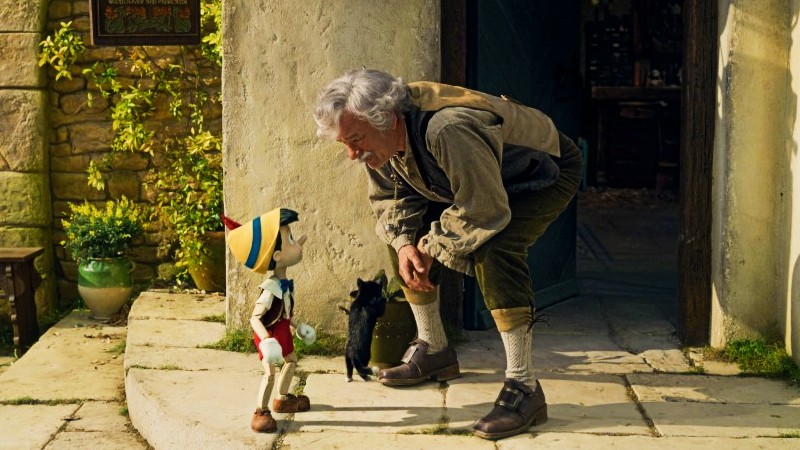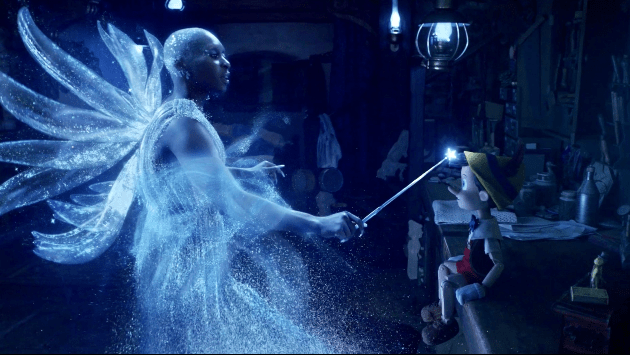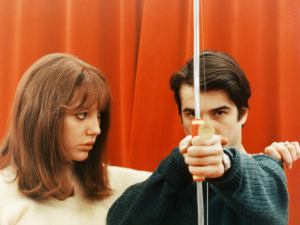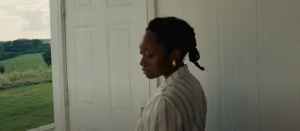
When Walt Disney released Pinocchio (1940) as its second feature length animated film, it cemented both the man and the studio as cinematic titans. Not only did it prove that Snow White and the Seven Dwarves (1937) was not just a flash in the pan success, but that animation can be a legitimate artistic format. It had the ability to build worlds and inhabit them with characters not feasible in live action. The story of a wooden puppet wishing to become a real boy was injected with themes of honesty, goodness, and responsibility. This was all wrapped in stunning animation that holds up to this very day. It goes without saying: Pinocchio is not just one of the great animated films ever produced, but one of the greatest films of all time.
So when it was announced that Disney would add it to its ever growing list of live action remakes, the question that first sprang to mind was “Why?” Why try to do something that was already perfect the first go around? The obvious answer is for money, but let’s try to dig a little bit deeper, shall we? Director Robert Zemeckis – known for his preference for special effects – had a difficult task placed in front of him. Pinocchio is beloved, with recognizable characters, scenes, and music. To stray too far away from an established property is risking alienating a fan base. Yet at the same time, bringing a new twist to the material may add life to an old adventure.

Sadly, the final product feels too much like the 1940 classic to stand on its own. Zemeckis (who co-wrote the screenplay with Chris Weitz and Simon Farnaby) adheres so closely to the animated version that the result is a cinematic carbon copy. The narrative is basically the same, with an elderly inventor named Geppetto (Tom Hanks) creating the now famous wooden puppet Pinocchio (Benjamin Evan Ainsworth). Through the power of the Blue Fairy (Cynthia Erivo), Pinocchio is granted life with the possibility of becoming real. Every element you may remember is here: Jiminy Cricket (Joseph Gordon-Levitt), Honest John (Keegan-Michael Key), Stromboli (Giuseppe Battiston), Lampwick (Lewin Lloyd), Pleasure Island, Monstro, Figaro, Cleo – they’re all back and nearly identical to their hand drawn counterparts. Even small moments call back to the first film, such as when Pinocchio does a little turn for Geppetto before he goes to school.
The production adheres so closely to the past – in structure and design – that any changes feel like surface level dressing. One of the biggest additions involves fleshing out Geppetto’s backstory. Hanks leans into his reputation as Hollywood’s Nicest Celebrity, giving Geppetto warmth through his presence alone. The writing and direction expand the character’s past, adding a dose of tragedy that builds his motivations. We can understand why he would create a puppet and wish with all his might for it to become a real boy. The early scenes turn out to be the most emotionally driven, because Hanks is featured. When he is no longer the center of attention, the energy noticeably dissipates. The introduction of a new character, Sabina (Jaquita Ta’le) – a fellow performer for Stromboli – has lots of potential, but doesn’t get enough emphasis to make a genuine impact. There are plenty of other instances where the narrative tinkers with the timeline, expanding scenes with new songs (Alan Silvestri) or contracting time (edited by Mick Audsley and Jesse Goldsmith) to speed things up, but much of this is new paint over an established design. It’s as though Zemeckis was so hesitant to experiment with the material that any updates – outside of Geppetto’s development – felt minor.
The question then becomes: does this work because it follows so closely to the blueprint, or does it fail because it lacks its own identity? There’s no doubt that the production did a marvelous job recreating this world. The art direction constructs the sets with bright and colorful textures. Pleasure Island looks like something out of the Las Vegas Strip before it descends into its well-known nightmare. But even with its high production values, there was something slightly off about this whole endeavor. I am not against the idea of Disney remaking its own films. To this day I believe the updated version of Cinderella (2015) is an excellent reimagining. But there’s something about Pinocchio that leaves a bad taste. This is most exemplified in the scene with Geppetto’s cuckoo clocks. As each one strikes a new hour, we see familiar characters from other Disney works popping out of them. From The Lion King (1994) to Zemeckis’ own Who Framed Roger Rabbit (1988), characters that have no business in this universe are put on screen. None of this makes sense outside of Disney flexing its own intellectual property. It’s as if the multi-billion dollar company wanted to dedicate an entire sequence to roll out its greatest hits collection.

I know a lot of this review sounds negative, but that is not due to the overall story. Families will once again be drawn to Pinocchio coming of age and learning from his mistakes. Proving himself brave and responsible is more important than being a “real boy.” In terms of its morals and messaging, this version does what it needs to do. But the magic is missing. There is no feeling that this is doing something new and exciting. The song “When You Wish Upon a Star,” has lost its luster. One might argue that this can be the definitive version for a new generation, which is valid but disheartening. This has all the right lyrics but sings them off key. What’s the difference, you ask? Let’s examine the scene when Pinocchio’s nose grows after telling a lie. In the animated film, this moment is an opportunity to understand right from wrong. In this version, he uses his long nose to help him get out of a sticky situation. See the difference?
Pinocchio (2022) is not bad at the basic level – it is a sleek and polished work. But it also does very little to justify its own existence. At the very least, this will help people find and fall in love with the 1940 animated film. It’s strange that Zemeckis – who had every cinematic tool at his disposal – played things so safe. This is a for-profit undertaking that lacks any kind of personality. Zemeckis lends his skill to this production, but sadly not his voice.
The post Film Review – Pinocchio (2022) written by Allen Almachar appeared first on The MacGuffin: Film and TV Reviews, Interviews, Analysis.



